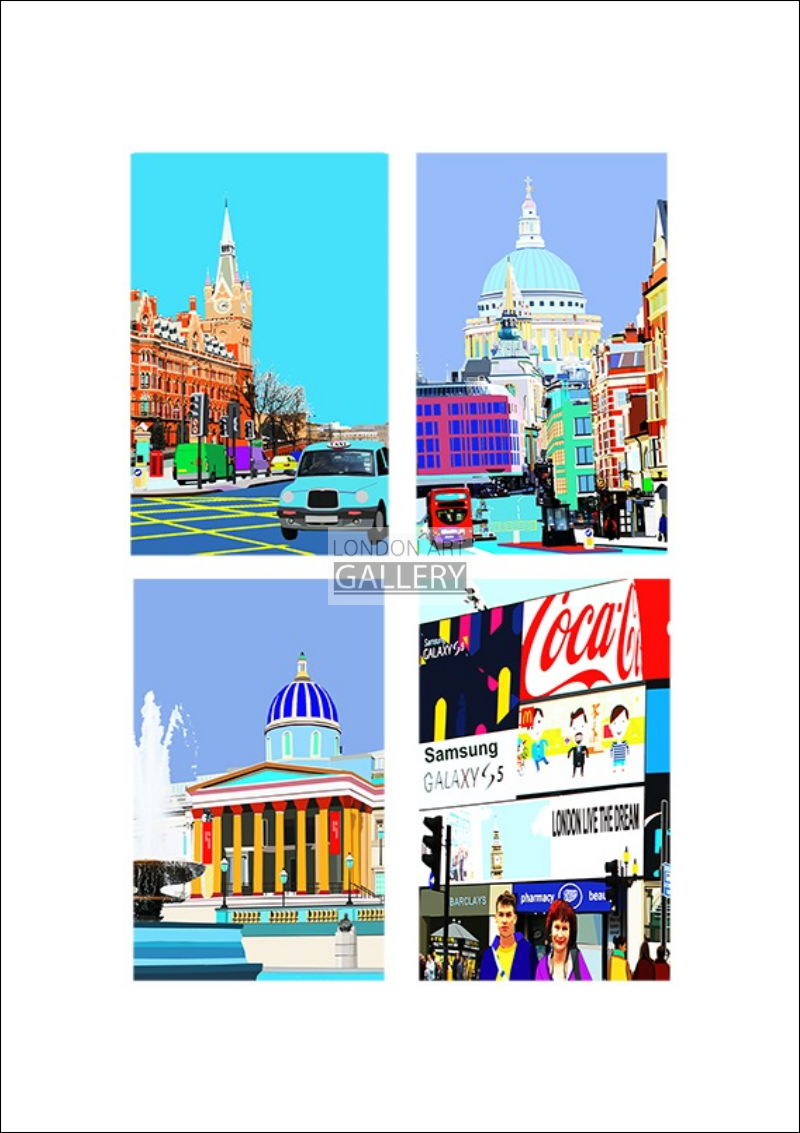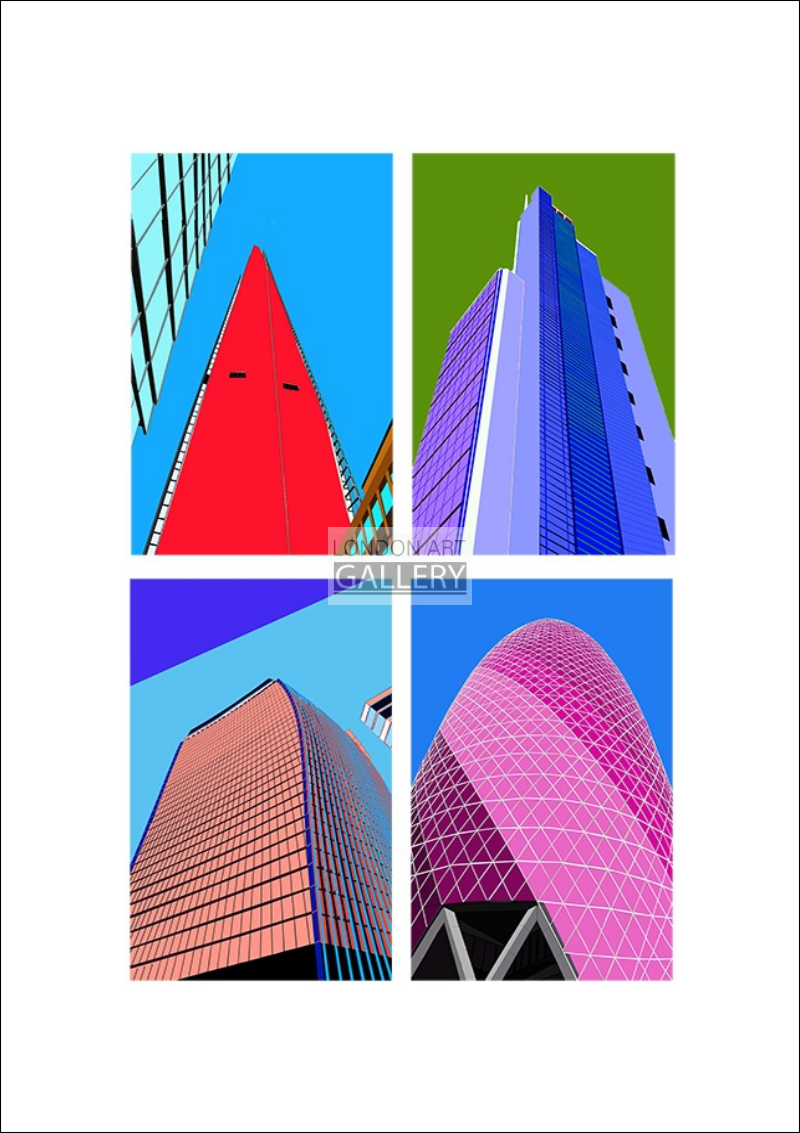Description
- Euston Road is a road in Central London, England, running from Marylebone Road to King’s Cross. It forms part of the London Inner Ring Road and is part of the London congestion charge zone boundary. The road was originally the central section of the New Road from Paddington to Islington, opening in 1756 as London’s first bypass in the area. It was originally designed to drive cattle to Smithfield Market, avoiding central London. Traffic increased as a result of the opening of several major railway stations in the mid-19th century, including Euston Station, which led to the road being renamed Euston Road in 1857. The route was extensively widened in the 1960’s in order to cater for the increasing demands of motor traffic, which led to the construction of the Euston Tower, yet still contains several significant buildings including the Wellcome Library, the British Library and the St. Pancras Renaissance London Hotel.
- Fleet Street is a major street in the City of London. It runs west to east from Temple Bar at the boundary with the City of Westminster to Ludgate Circus at the site of the London Wall and the River Fleet from which the street was named. Having been an important through route since Roman times, businesses were established during the Middle Ages. Senior clergy lived in Fleet Street during this period where there are several churches including Temple Church and St Bride’s. Fleet Street became known for printing and publishing at the start of the 16th century and it became the dominant trade so that by the 20th century most British national newspapers operated from here. Much of the industry moved out in the 1980s after News International set up cheaper manufacturing premises in Wapping, but some former newspaper buildings are listed and have been preserved. The term Fleet Street continues to be used as a metonym for the British national press, and pubs on the street once frequented by journalists remain popular. Fleet Street has a significant number of monuments and statues along its length, including the dragon at Temple Bar and memorials to a number of figures from the British press, such as Samuel Pepys and Lord Northcliffe. The street is mentioned in several works by Charles Dickens and is where the legendary murderous barber Sweeney Todd lived.
- Trafalgar Square is a public square in the City of Westminster, Central London, built around the area formerly known as Charing Cross. Its name commemorates the Battle of Trafalgar, a British naval victory in the Napoleonic Wars with France and Spain that took place on 21 October 1805 off the coast of Cape Trafalgar, Spain. The site of Trafalgar Square had been a significant landmark since the 13th century and originally contained the King’s Mews. After George IV moved the mews to Buckingham Palace, the area was redeveloped by John Nash but progress was slow after his death and the square did not open until 1844. Nelson’s Column at its centre is guarded by four lion statues. A number of commemorative statues and sculptures occupy the square but the Fourth Plinth, left empty since 1840, has been host to contemporary art since 1999.
- Piccadilly is a road in the City of Westminster, London to the south of Mayfair, between Hyde Park Corner in the west and Piccadilly Circus in the east. It is part of the A4 road that connects central London to Hammersmith, Earl’s Court, Heathrow Airport and the M4 motorway westward. St James’s is to the south of the eastern section, while the western section is built up only on the northern side. At just under 1 mile (1.6 km) in length, Piccadilly is one of the widest and straightest streets in central London.





